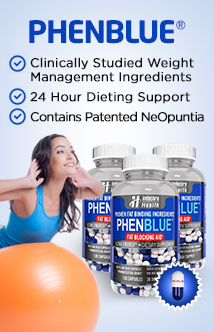
Pain Management
- Senior Health
- Hits: 8743
Absolutely everyone has experienced pain of one kind or another. Pain is the largest single reason for doctors’ visits in North America with over 80% of all medical treatments for the purpose of pain relief. Pain management is simply the use of medications or other treatments to reduce and tolerate pain.
Pain is generally categorized in two ways. Acute or short term and chronic which is long term and persistent. Living with constant pain is exhausting and robs individuals of their quality of life. The impact from pain is felt not only physically but mentally and emotionally as well. Fortunately for many there is relief available. There are, however, as many varied options for pain relief as there are types of pain. Many factors must be considered when choosing a pain management plan beginning with the type, severity, duration and location of the pain.
Treatments for Pain Management
Over 60 billion dollars is spent annually on medications and therapies to relieve painful conditions. The most common treatment for all types of pain is medications. Alternative or other therapies that are available include: acupuncture, meditation or prayer, lifestyle alterations, exercise, nerve blockers, surgery, herbal treatments, injection therapy, physiotherapy, magnets, cortisteriods, water, heat, cold and electrical therapies or hypnosis. Whichever treatment you decide upon, effective relief should result in the improved ability to function normally.
Obviously, you would treat a headache very differently from a bacterial infection or a severed spine. The most important part of any successful pain therapy is a correct diagnosis. This can sometimes be quite difficult and challenging. Physicians are available that are qualified as ‘pain specialists’ and many of the larger hospitals throughout the United States, Canada and Europe have Pain Management Centers.
Types of Medications used for Pain Management
You will hear pain medicines referred to ‘analgesics’. The word analgesic simply means “any chemical agent that kills pain”. Analgesics come in two categories, narcotic and non-narcotic. They work by stopping pain signals on their way to the brain or by altering the way the brain responds to a pain signal. Non-narcotic analgesics encompass acetaminophens, anti- inflammatories and muscle relaxants.
- Acetaminophen (also called paracetamol), is a mild to moderate painkiller effective in reducing fever. Tylenol is an example of a non-narcotic acetaminophen. Codeine would be an example of a narcotic acetaminophen.
- Anti inflammatory drugs which slow down the production of the hormones that cause inflammation and pain are used for things like headaches and arthritis. The most popular are aspirin (acetylsalicylic acid) and ibuprofen.
- Muscle relaxants block pain between the nerves and the brain. The most widely prescribed non steroidal muscle relaxant in North America is Carisoprodol (brand name Soma) because it is powerful and fast acting. Muscle relaxants work best when combined with rest and physiotherapy.
- The narcotic analgesics like codeine and morphine are much stronger and require a doctor’s prescription and supervision for use. They can also be habit forming.
Do not let any misguided perceptions regarding tolerance, dependence, and addiction prevent you from using medication as a tool to conquer pain, especially if you are a chronic sufferer. There are side effects to all drugs. The golden rules for taking any medicine successfully are to exactly follow the manufacturer’s instructions regarding dosage and usage, be aware of any warnings and seek the advice and guidance of a medical professional, such as your doctor, before taking any medications long-term.
General Recommendations
Aside from professional therapies and various types of medications, there are forms of pain management that you can practice in your everyday life. This can be the case whether you’re struggling with a specific pain in your body or are trying to reduce the risk of experiencing unnecessary pain. It is always recommended that you speak with your doctor before taking on any major changes to your lifestyle. This is particularly true if you are already suffering from discomfort and are trying to overcome it.
That said, many of these general recommendations can work for you as a healthy individual or if you are trying to enhance your pain management strategies.
Lifestyle Changes to Prevent or Minimize the Discomfort
Consider adding the following to your lifestyle where appropriate.
- Boost your nutrition – Eat a well-balanced diet on a regular basis. By giving your body all the nutrition it needs, you can keep your bones, muscles and joints strong and can help to control inflammation.
- Keep up a healthy body weight – Excess body fat adds strain to the joints, muscles and certain vital systems. This increases your experience of pain. Talk to your doctor about a healthy and gradual weight management strategy and if there are weight loss products you should be using to support that effort.
- Be physically active – Regularly practicing low-impact exercise such as walking, cycling or swimming helps to use muscles, lubricate joints, raise circulation and respiration and reduce pain. They avoid strain on the joints and help to make it less painful to use your body.
- Build body strength and flexibility – This doesn’t mean that you need to become a bodybuilder. Instead, practices such as yoga or other gentle core-building and range of motion exercises can keep your body healthy and strong, enhance your posture and help you to avoid injury.
Manage stress – Mental health struggles can lead to sensations of physical pain. Moreover, when you’re experiencing physical pain, high stress levels can amplify the sensation. If you have a mental health condition, seek assistance in treating it. To help manage stress to boost your pain management, practice mindfulness, gentle stretching, meditation, or tai chi.














